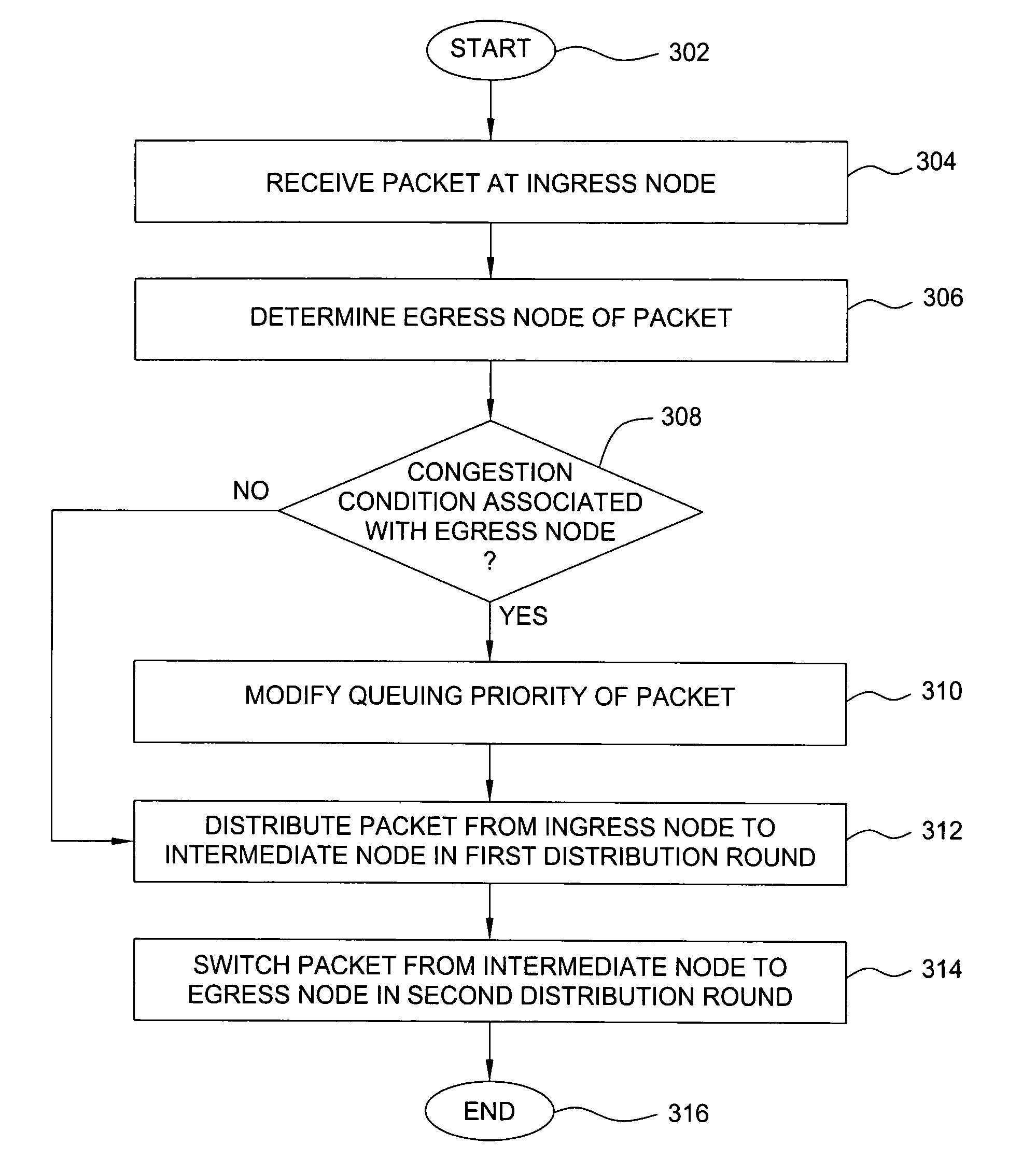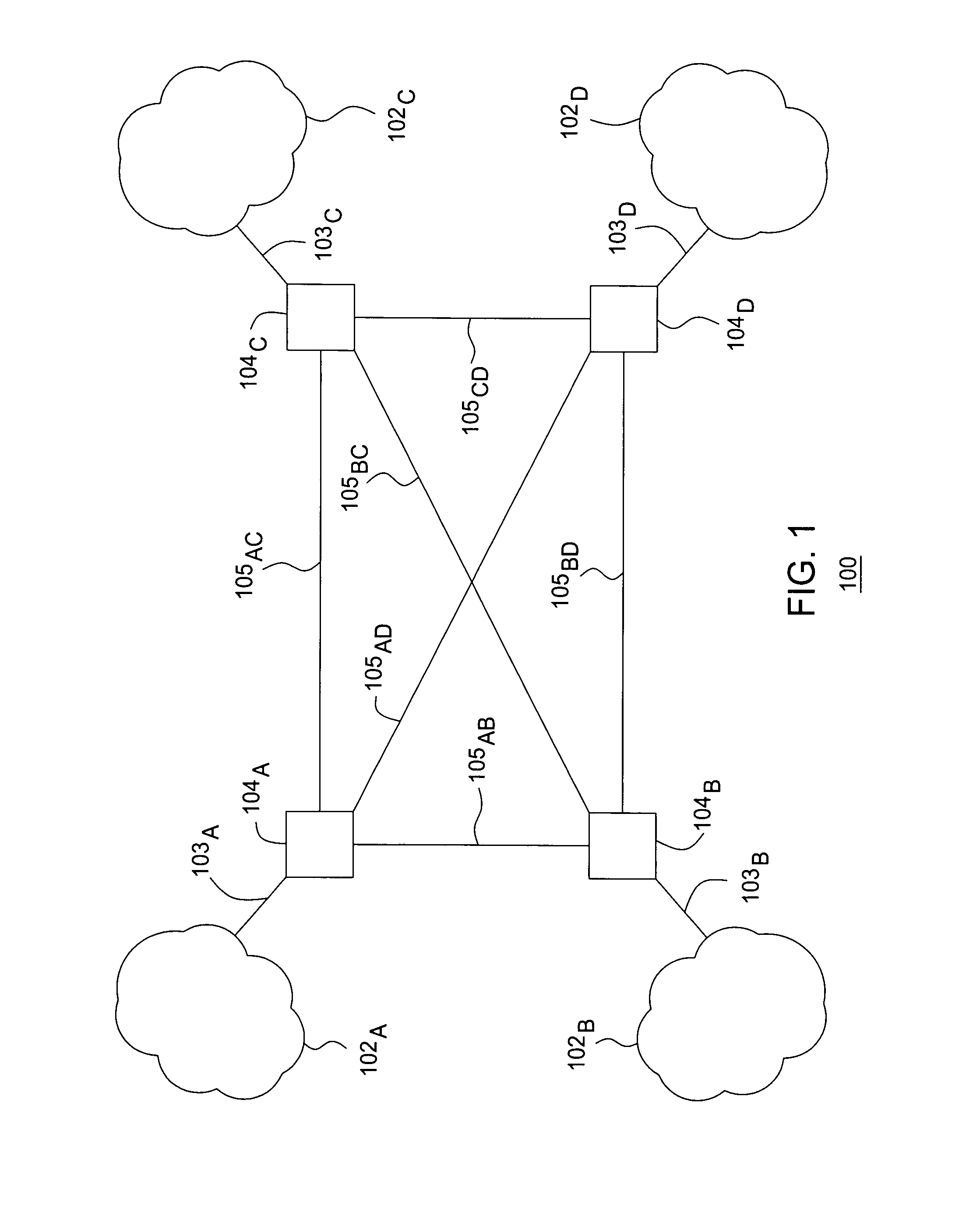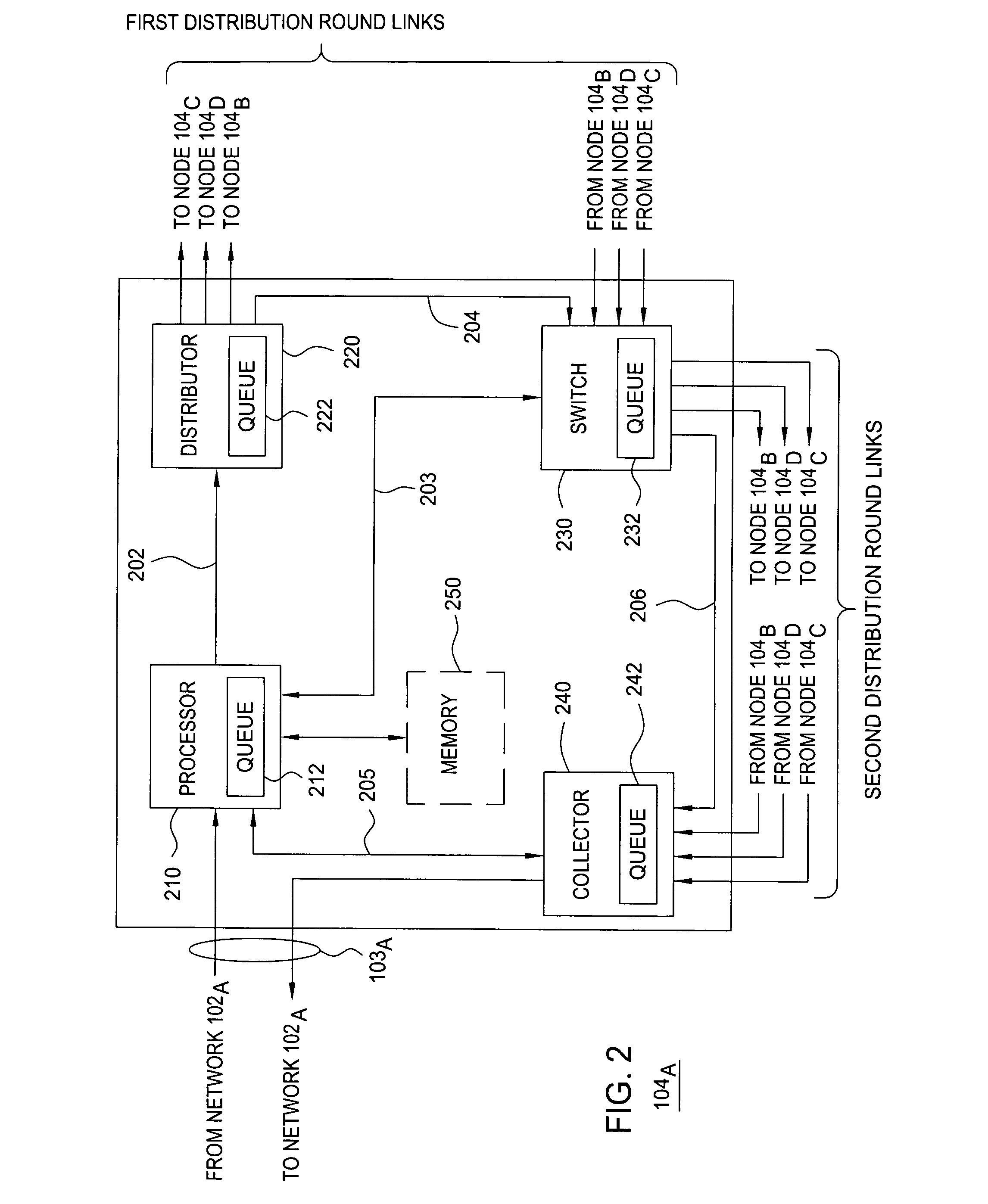Method and apparatus for preventing congestion in load-balancing networks
a load-balancing network and load-balancing technology, applied in the field of communication networks, can solve problems such as link speed, additional delay in response to hose constraint violations, and reduced throughput of transmission control protocol (tcp)
- Summary
- Abstract
- Description
- Claims
- Application Information
AI Technical Summary
Benefits of technology
Problems solved by technology
Method used
Image
Examples
Embodiment Construction
[0016] The present invention controls queuing priority of packets traversing a load-balancing network. The present invention uses egress node information and egress node congestion information for controlling queuing priority of packets traversing a load-balancing network. The present invention modifies the queuing priority of packets on ingress nodes of the load-balancing network by which the packets enter the load-balancing network. The present invention utilizes the egress node information and egress node congestion information associated with each packet for determining whether to process the packet for modifying the queuing priority of the packet (or for dropping the packet at the ingress node). The present invention utilizes the egress node information for determining egress node congestion information.
[0017] The packet egress node information identifies the egress node from which the packet is assigned to leave the load-balancing network (i.e., information typically used for...
PUM
 Login to View More
Login to View More Abstract
Description
Claims
Application Information
 Login to View More
Login to View More - R&D
- Intellectual Property
- Life Sciences
- Materials
- Tech Scout
- Unparalleled Data Quality
- Higher Quality Content
- 60% Fewer Hallucinations
Browse by: Latest US Patents, China's latest patents, Technical Efficacy Thesaurus, Application Domain, Technology Topic, Popular Technical Reports.
© 2025 PatSnap. All rights reserved.Legal|Privacy policy|Modern Slavery Act Transparency Statement|Sitemap|About US| Contact US: help@patsnap.com



